How to Grow and Care for Philodendron Xanadu
This easy-care houseplant with lush foliage does not need frequent watering
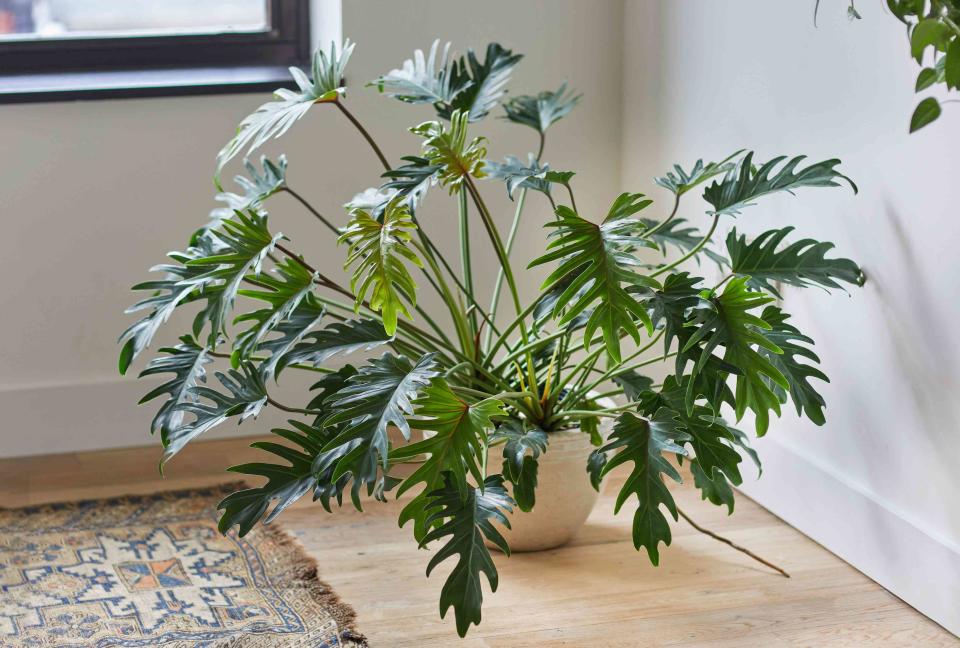
The Spruce / Adelyn Duchala
Reviewed by Kathleen Miller
If you are looking for a large tropical houseplant to add to your home then the philodendron xanadu (Thaumatophyllum xanadu) is an excellent choice. Easy to grow with dense, lush foliage, this Brazilian native is known for its large, glossy, multi-lobed leaves and bushy growth habit. It is a moderately fast grower.
Until recently, this plant was considered a philodendron, hence its common name. However, in 2018 the philodendron xanadu, along with several other plants in the Philodendron genus were reclassified into the newly created Thaumatophyllum genus. Despite this reclassification, the plant remains toxic to pets and humans.
The 15 Best Places to Buy Plants Online in 2024
Common Name | Philodendron xanadu, Winterbourn philodendron |
Botanical Name | Thaumatophyllum xanadu |
Family | Araceae |
Plant Type | Perennial |
Mature Size | 3-5 ft. tall and wide |
Sun Exposure | Partial |
Soil Type | Moist but well-drained |
Soil pH | Acidic, neutral |
Hardiness Zones | 9-11 (USDA) |
Native Area | South America |
Toxicity | Toxic to humans, toxic to pets |
Philodendron Xanadu Care
Here are the main care requirements for growing a philodendron xanadu:
Give it a location in bright, indirect light.
Plant it in a well-draining potting mix, preferably one specifically formulated for aroids.
Water the plant infrequently but deeply and let the plant dry out between waterings.
If the humidity level in your home is low, provide extra humidity with a pebble tray or a humidifier.
Fertilize the plant once a month during the growing season in the spring and summer.
Repot it to a larger container with fresh potting mix when it outgrows its old pot.
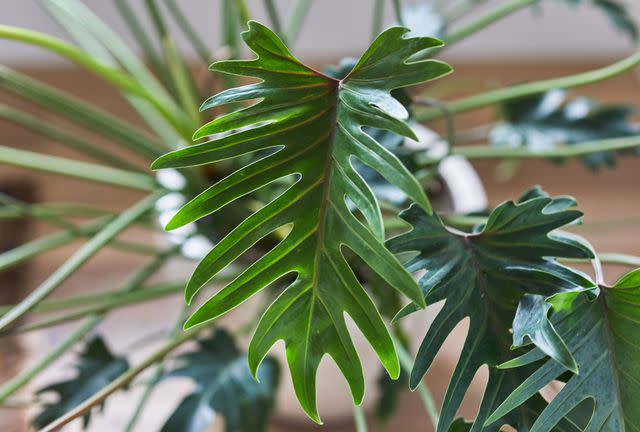
The Spruce / Adelyn Duchala
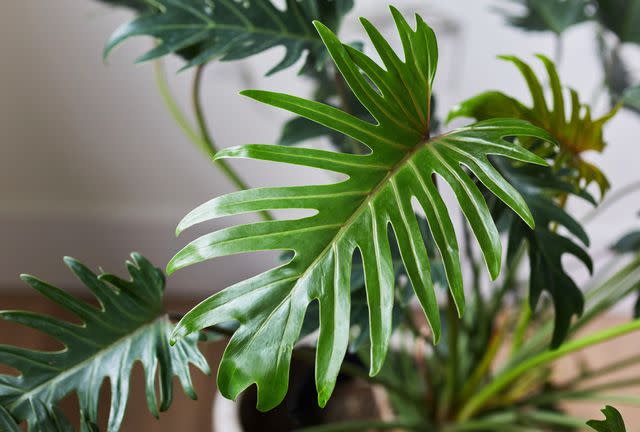
The Spruce / Adelyn Duchala
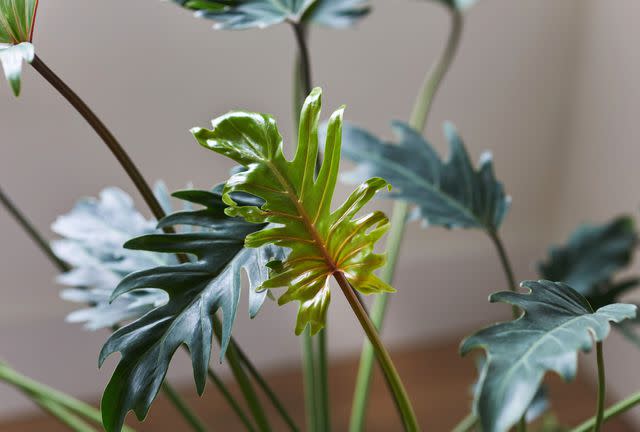
The Spruce / Adelyn Duchala
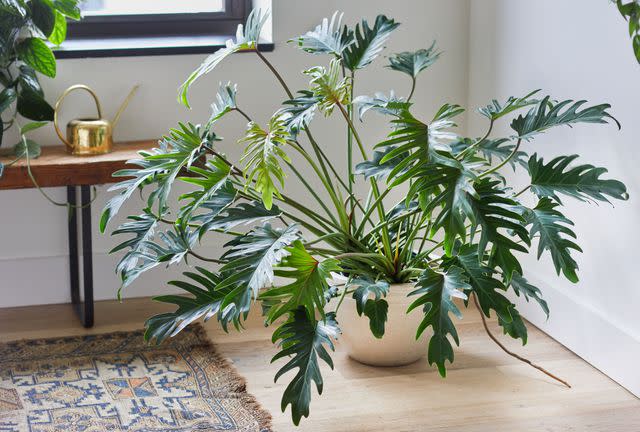
The Spruce / Adelyn Duchala
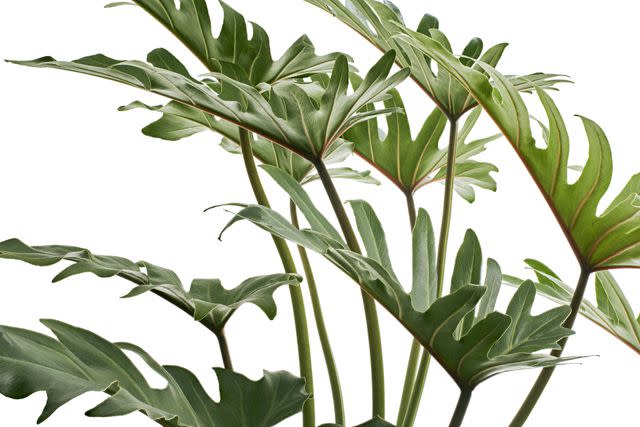
Dewin ' Indew / Getty Images
Light
As a forest understory plant, the xanadu is accustomed to receiving several hours of indirect, dappled light every day. As a result, it does best in bright, indirect light when grown indoors, although it tolerates short periods of low light as well. Be careful not to expose this tropical plant to extended periods of intense, direct sunlight as it may develop leaf burn.
Soil
Choose a soil mix that is rich, airy, and well-draining while still retaining some moisture. A combination of equal parts indoor potting soil, perlite, and orchid bark is a great option that you can easily whip up at home. Alternatively, any ready-made soil mix that is designed for aroids is a great option.
Water
Allow the soil to almost completely dry out between waterings and then water your philodendron xanadu thoroughly. Ideally, you should be watering your plant until water drains from the pot’s drainage holes (houseplants should always be planted in pots with drainage holes). Ensure all excess water has drained from the pot before returning it to its original location.
Like most houseplants, it is generally better to under-water a philodendron xanadu than to overwater it. These tropical plants are sensitive to overwatering and often develop root rot if their roots are left sitting in water.
Temperature and Humidity
For the most part, standard household temperature and humidity levels are fine for a philodendron xanadu. That being said, these tropical plants do enjoy humid conditions where available, so providing your xanadu with an extra source of humidity will always be appreciated. Try placing a small humidifier nearby or moving your plant to a naturally humid room such as a bathroom, kitchen, or laundry room.
Fertilizer
In spring and summer, fertilize your philodendron xanadu with a balanced liquid fertilizer once a month. Ensure you dilute the fertilizer before applying it to prevent fertilizer burn.
Pruning
The plant does not require any pruning other than removed dead or diseased foliage or stems.
Propagating Philodendron Xanadu
These tropical plants are easily propagated using stem cuttings. Here’s how it's done:
Using a pair of sharp, clean pruning shears or scissors, remove stem cuttings from a healthy and mature xanadu. Ensure each cutting has between three to five nodes along the stem.
Remove the bottom leaves from each stem cutting to expose the nodes along the stem. Each cutting should be left with around one to two leaves for the best chance of success.
Prepare a small container by filling it with fresh, clean water and place the stem cuttings in the water, ensuring the remaining leaves sit above the water while the nodes are submerged in water.
Place the cuttings in a location that receives bright indirect light, and refresh the water once a week. After a couple of weeks, you should begin to see small white roots forming. Once the roots are at least an inch long, transfer the cutting from water to soil.
Fill a small pot or container with well-draining soil and plant the rooted cutting(s) in the soil, patting it down firmly and then watering it thoroughly.
Return the planted cuttings to their bright window. For the first week, keep the soil evenly moist to help the roots acclimate back to the soil.
Potting and Repotting Philodendron Xanadu
Philodendron xanadu only needs to be repotted once it begins to outgrow its previous potting container. Usually, this means once every one to two years depending on your plant’s health and growing environment. Choose a new pot that is two to three inches larger than its previous container. Ideally, wait until the late winter or early spring to repot your plant in an effort to reduce the risk of shock. Then, ensure that you replace as much of the soil as possible with fresh soil mix and water the freshly repotted plant well.
Common Pests & Plant Diseases
This plant is not particularly prone to any pests or diseases, but like most houseplants, there are a few common pests and diseases to keep an eye out for. Watch out for signs of spider mites, mealybugs, and thrips, as well as root rot (which often results from overwatering). Regularly inspecting your plant for signs of pests is the best way to catch any potential infestations early and ensure the problem doesn’t get out of hand.
Common Problems With Philodendron Xanadu
Philodendron xanadu is a pretty trouble-free houseplant; however, there are a few common houseplant problems that may afflict it. Keep an eye out for the following:
Yellow Leaves
Leaves turning yellow are in many cases perfectly normal and expected, or they are a sign of a problem.
If your plant develops one or two yellow leaves as it ages, there is probably nothing to worry about—especially if it's the oldest leaves that are turning yellow. However, if all of your plant's leaves suddenly start turning yellow and falling off then you probably have a bigger problem on your hands.
Usually, yellow leaves are a sign of either underwatering or overwatering, but can also be an indication that your plant is not receiving enough light (and sometimes that it is receiving too
much light). Additionally, yellow leaves possibly indicate temperature stress or a lack of humidity. Closely examine the growing environment of your plant to determine the root cause and take corrective action.
Brown Leaves
Similarly, brown leaves are a common problem for houseplants. Possible causes are underwatering, lack of light, too much light, or lack of humidity. Again, closely examine your plant’s growing environment to determine the culprit.
Frequently Asked Questions
What is the difference between Philodendron selloum and xanadu?
The two are closely related but there are a few distinct differences. Philodendron selloum is much larger and has a climbing growth habit, developing a thick trunk and large aerial roots as it matures whereas P. xanadu remains relatively compact and bushy without climbing. P. xanadu has slightly smaller and narrower leaves than P. selloum, although the shapes are very similar.
Does philodendron xanadu flower?
Like all philodendrons that are grown indoors, the plant rarely flowers. Outdoors, it blooms seasonally. The flowers resemble those of the peace lily but with a dark red spathe surrounding a creamy white spadix.
Should I mist my philodendron xanadu?
While philodendron xanadu does well in standard household humidity levels, they will thrive if given some added humidity. That being said, misting the leaves is not the best way to increase the humidity for the plant and can actually result in fungal infections due to the increased amount of water that is left sitting on the leaves. Instead, try placing a humidifier close to the plant or moving your xanadu into the bathroom or laundry room if you are concerned about humidity.
Read the original article on The Spruce.

